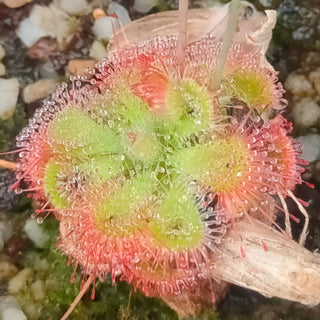Phacelia tanacetifolia
LACY PHACELIA, BLUE TANSY
Organic
- Unit price
- / per
Phacelia tanacetifolia is known by the common names lacy phacelia, tansy-leaf phacelia, blue tansy, purple tansy or fiddleneck. Phacelia tanacetifolia is native to the Southwestern United States and northwestern Mexico. It is most common in the deserts of southern California. It is used outside its native range as a bee plant, an attractant for other beneficial insects, and an ornamental plant. It is planted in vineyards and alongside crop fields, where it is valued for its long, coiling inflorescences of nectar-rich flowers which open in sequence, giving a long flowering period. It is a good insectary plant, attracting pollinators such as bumblebees and honey bees. It is also attractive biological pest control agents hoverflies because they eat aphids and other pests.
Type: Annual, or perennial in zones 9-11
Hardiness zones: 9-11, or grown as an annual
Height: 32", 80cm
Location: Sun
Seeds per packet: 25
Start these seeds indoors in winter, spring, or early summer. Sow just under the surface of the soil and water in. Then, cover the container and keep in a completely dark location. Darkness is required for germination. Keep continuously moist. Temperature 20-22°C, 68-72 °F. Seeds germinate in 21-50 days. If seeds are received in fall, store in the refrigerator until the soonest chance that they are able to be planted.
Phacelia tanacetifolia
LACY PHACELIA, BLUE TANSY
Organic
- Unit price
- / per
Multiple secure payment options available.
Adding product to your cart
You may also like
Phacelia tanacetifolia is known by the common names lacy phacelia, tansy-leaf phacelia, blue tansy, purple tansy or fiddleneck. Phacelia tanacetifolia is native to the Southwestern United States and northwestern Mexico. It is most common in the deserts of southern California. It is used outside its native range as a bee plant, an attractant for other beneficial insects, and an ornamental plant. It is planted in vineyards and alongside crop fields, where it is valued for its long, coiling inflorescences of nectar-rich flowers which open in sequence, giving a long flowering period. It is a good insectary plant, attracting pollinators such as bumblebees and honey bees. It is also attractive biological pest control agents hoverflies because they eat aphids and other pests.
Type: Annual, or perennial in zones 9-11
Hardiness zones: 9-11, or grown as an annual
Height: 32", 80cm
Location: Sun
Seeds per packet: 25
Start these seeds indoors in winter, spring, or early summer. Sow just under the surface of the soil and water in. Then, cover the container and keep in a completely dark location. Darkness is required for germination. Keep continuously moist. Temperature 20-22°C, 68-72 °F. Seeds germinate in 21-50 days. If seeds are received in fall, store in the refrigerator until the soonest chance that they are able to be planted.



















































